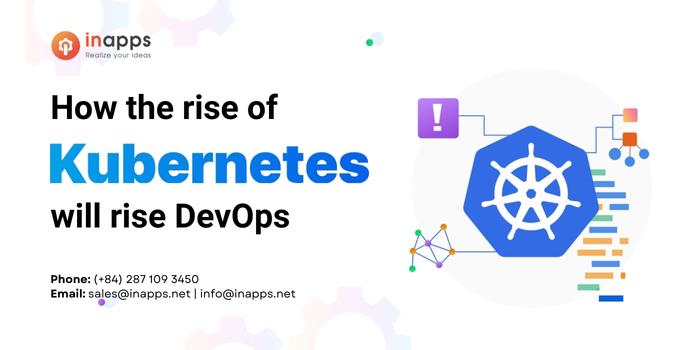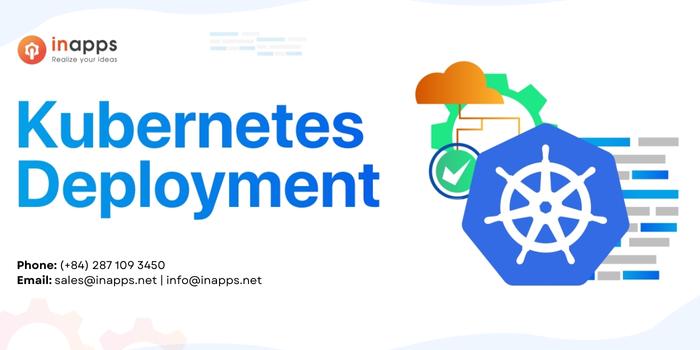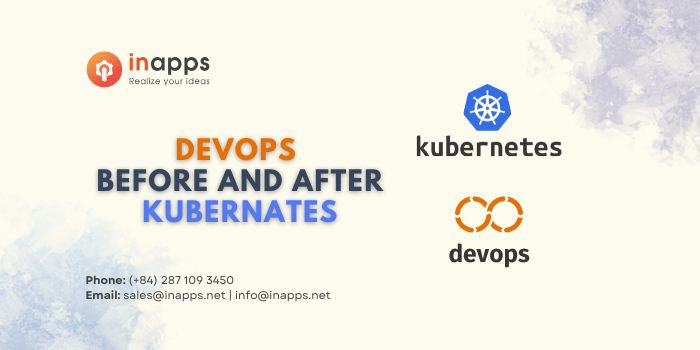- Home
- >
- DevOps News
- >
- DevOps before and after Kubernetes
In the pre-Kubernetes era, infrastructure and app development were inescapably intertwined. As complexities grew and teams evolved, we saw “DevOps” emerge as a bridge between development and operations in an attempt to resolve the age-old delivery trouble arising from developers throwing things over the wall to ops and then ops having to deal with production issues on the other side.
DevOps rose to be a new subculture within existing teams, sometimes yielding new “DevOps teams” and leading to a new class of tools and methodologies.
In reality, bridging skills and evolving an operational culture was not enough. Issues arise in the correct functioning of an application without proper configuration management. Application configuration often conflicts with IT’s own configuration goals towards security, scalability, and availability.
Inevitably, every time the pager went off — except for trivial issues — both roles would get pulled in to uncover the mysteries of running software in production.
The challenge of agile delivery was that application configuration and infrastructure configuration had to be achieved collaboratively yet have well-defined ownership and clear role separation. Without such a model, too many heads were still involved in delivery, resulting in friction and spilled energies.
On top of that was the classic case of ‘it-works-for-me’ syndrome wherein developers would often complain that their software worked fine in their own configured development environments but behaved differently once pushed to an IT configured environment.
Configuration hell reigned, even as the culture of DevOps seemed to be finding its way.

Configuration-Driven DevOps: From Idempotency to Immutability
To address these challenges, the industry turned to the principle of idempotency. Most of us understand idempotency simply as “an operation that produces the same end-result no matter how often it is performed.” In the case of configuration management, this end result would be the desired configuration of an app’s environment.
When an environment deviates from its desired configuration we could use this principle to ensure that the drift is corrected and the environment is returned to the desired state. Tools such as Puppet and Chef were born out of this idea and seemed to be the most suitable solution for a while.
While the idempotency theory solved some issues, it came with its challenges.
We had a way of knowing when things changed and only updating things that needed to be updated. However, it did not solve all the problems as we still had to cater to a seemingly large number of cases.
This complexity became avoidable with the advent of containers. Instead of changing things, we could now deploy immutable fully-configured container images and simply replace older containers with new updated ones.
Thus the focus shifted from idempotency to another important principle: immutability. As Wikipedia says, “an immutable object is an object whose state cannot be modified after it is created.”
So once an application has been packaged into a container image along with its dependencies and configurations, any number of identical containers can be spawned.
Enter Kubernetes: Immutability + Infra Abstraction

With the popularity of containers becoming a DevOps game-changer, Kubernetes came to be the most sought-after container orchestration platform. Application teams could now be sure that their applications packaged as containers can be deployed onto any K8s environment running anywhere, and that the application would behave the same thanks to immutability.
In addition, Kubernetes’ excellent abstraction over the infrastructure meant that infrastructure and development teams could cleanly and separately focus on their own areas of expertise, taking away the massive configuration and collaboration challenges.
This seemed to end the configuration hell mentioned earlier, as we witnessed a fundamental shift emerge with the clean separation of concerns between runtime infrastructure ops and application deployment. So IT can focus on cluster infrastructure, capacity management, infrastructure monitoring, cluster level disaster recovery, networking, network security, storage redundancy, etc.
On the other hand, application teams can focus their energies on building container images, writing scripts (Kubernetes manifest YAML) for deployment and configuration, externalizing configuration and secrets, and so on.
Application teams no longer need to go back and forth between different skill sets, seeking information and coordinating with different teams to get the job done, nor waiting for hours/days to have tickets addressed.
Suddenly, there are ways to eliminate friction and lift the weight of collaboration. The actual infrastructure doesn’t matter anymore for delivery as it got nicely abstracted by K8s.
The Road Ahead for DevOps

With all the abstraction and clean separation that K8s brings, it also adds another layer on top of the VMs/machines on which it runs. This means additional overhead for IT about cluster management, networking, storage, etc.
Recently, there has been a lot of industry focus on simplifying K8s setup and management for enterprise teams to access all the intended benefits.
For an app team, containerizing a typical medium-sized, microservices-based app would require several thousands of lines of K8s manifest files to be written and managed.
Each new deployment would need a rebuild of container images and potential modifications of several manifest files. Clearly, DevOps in today’s world will be different from DevOps in the pre-Kubernetes era.
These new-world DevOps teams may do well with an automation process for delivery to Kubernetes so that efficiency gains and economic benefits can be realized sooner while also maintaining reliability and speed.
Such automation and a standardized process will enable a clean hand-off interface between the IT teams managing the infrastructure and the app teams delivering apps to K8s. For enterprises pursuing agility and frictionless delivery at scale, finding the shortest path to Kubernetes will be at the heart of DevOps in times to come.
Keep reading InApps to stay on the top of your game and not miss out on the ongoing market trends!
List of Keywords users find our article on Google
[sociallocker id=”2721″]
| kubernetes developer job description template |
| kubernetes service ownership |
| wikipedia kubernetes |
| devops wikipedia |
| kubernetes wikipedia |
| codeready containers |
| wikipedia devops |
| frictionless app delivery |
| chi infra high lift |
| download kubernetes: les bases indispensables pour devops [2022] |
| kubernetes: les bases indispensables pour devops [2022] |
| before and after devops |
| k8s-at-home |
| kubernetes youtube |
| last mile delivery orchestration |
| inception wikipedia |
| kubernetes: les bases indispensables pour devops [2022] download |
| is kubernetes worth it |
| kubernetes trends 2022 |
| k8s |
| software |
| idempotent vs immutable |
| idempotent devops |
| k8s devops |
| k8s monitoring |
| wikipedia inception |
| reality shifting wikipedia |
| apeople automation anywhere |
| wikipedia manifest |
| what comes after kubernetes |
| manifest wikipedia |
| immutable vs idempotent |
| wikipedia fortune 500 |
| clean architecture wikipedia |
| bridge to kubernetes 2022 |
| clean with passion for now wiki |
| kubernetes medium |
| medium microservices |
| medium ux case study |
| infrastructure monitoring wikipedia |
| speed bridging practice server |
| shortest wikipedia article |
| ux case study medium |
| ux wikipedia |
| bala software |
| tuf kubernetes |
| how to simplify wikipedia |
| ops manager kubernetes |
| wawa toyota |
| era infra |
| bala toyota |
| friction wiki |
| storageetc.com |
| chef vs kubernetes |
| codeready |
| configuration management jobs |
| object-path-immutable |
| qa technologist |
| kubernetes developer jobs |
| nestjs kubernetes |
| k8s at home |
| hire kubernetes developers |
| modified ecommerce templates |
| kubernetes office hours |
| hire kubernetes developer |
| sales to customer success handoff email template |
| could not resolve all files for configuration |
| disaster recovery wikipedia |
| how cloud-native storage can simplify your kubernetes |
| shortest-path-to-get-food |
| hand puppet template |
| how to achieve idempotency in microservices |
| netdevops automation |
| handoff email template |
| kubernetes 2022 |
| devops kubernetes architecture |
| devops as a service kubernetes |
| devops storage |
| kubernetes development company |
| monitor k8s |
| container image software |
| chef deploy monitoring |
| idempotent |
[/sociallocker]
Let’s create the next big thing together!
Coming together is a beginning. Keeping together is progress. Working together is success.

















